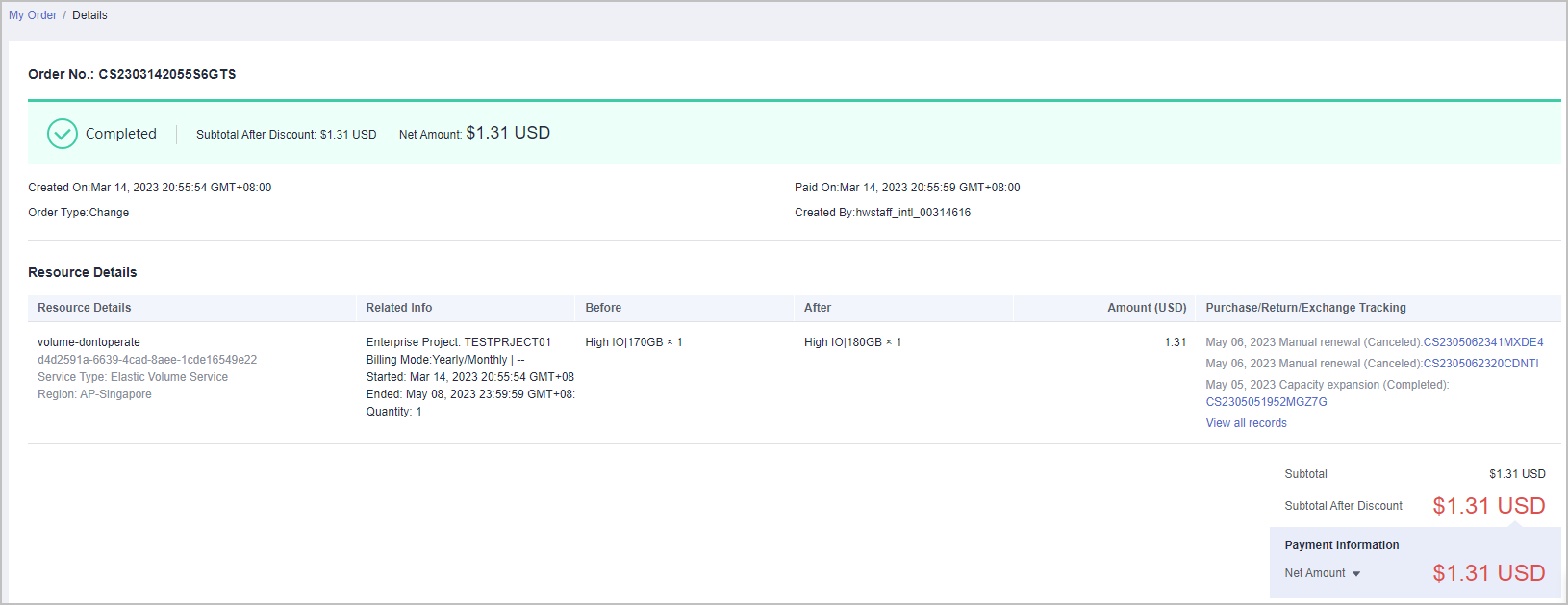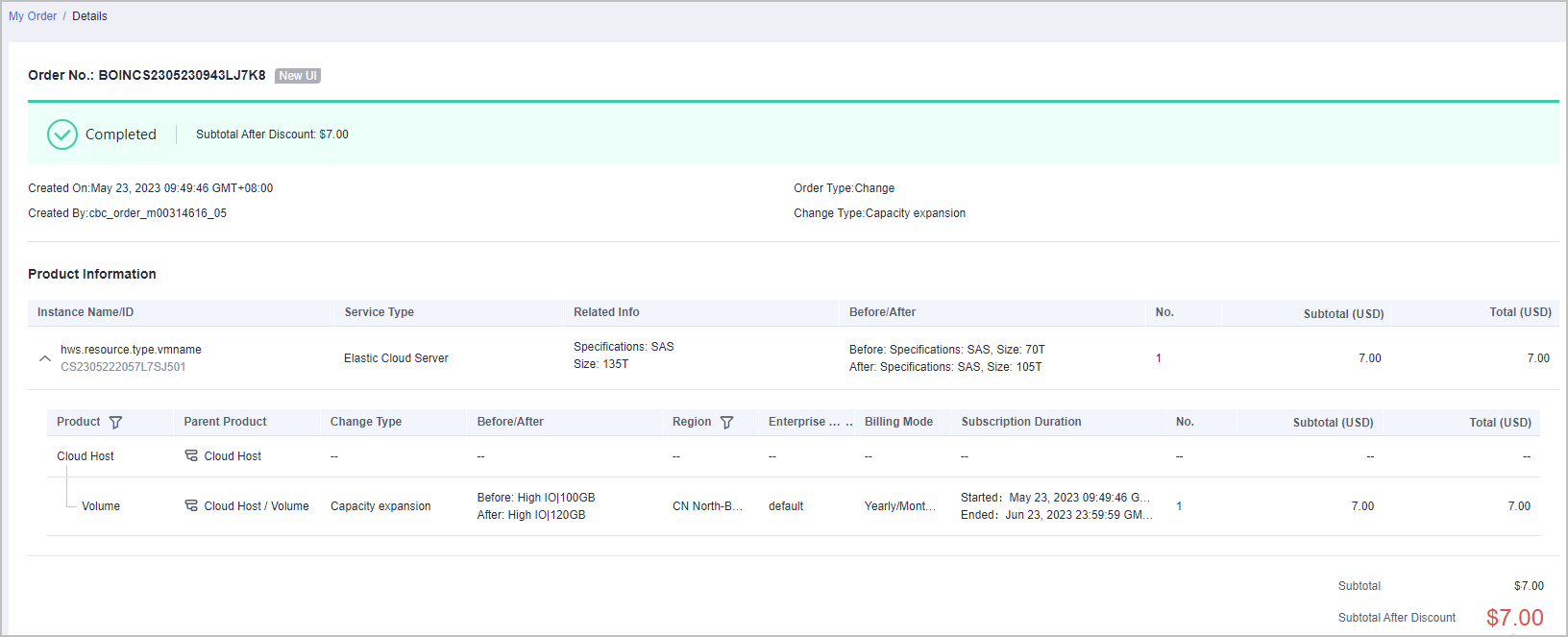What Changes Are Brought by the Combined Service and Combined Order?
A combined service consists of multiple resources and is purchased as a whole. The resources in a combined service must be purchased, used, renewed, changed, unsubscribed from, frozen, unfrozen, deleted, and billed together. A combined order includes multiple instances for batch management. The instances in a combined order must be paid or canceled together.
Take a combined order with a combined service of an ECS instance as an example.
Payments
- You can view the relationships in a combined service, their discounts, and their expenditures.
- You can select only one discount or one coupon for a combined service.
The changes between the original and current Pay pages are as follows:
- Original Pay page:
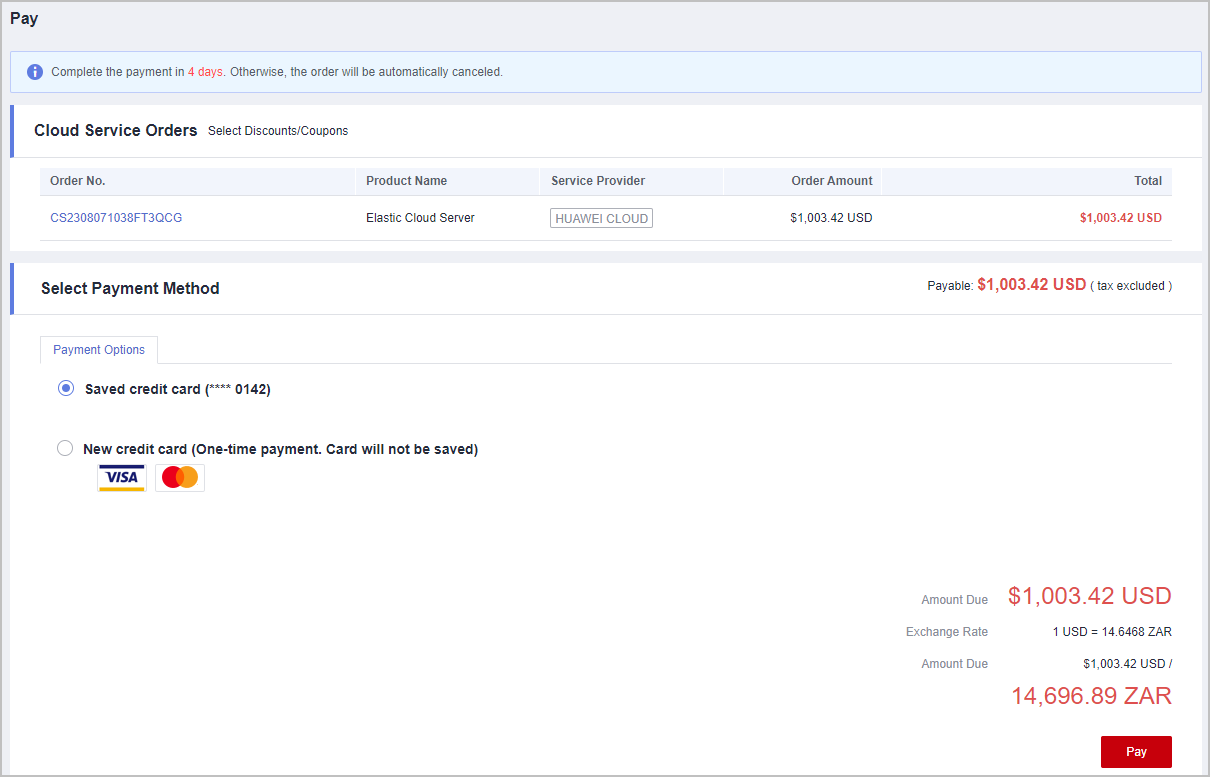
- Current Pay page:
- Order Type is added. The service name is replaced with the product type/combination type.
- You can expand a combined order to view the order details. If the combined order includes a combined service, you can also expand the orders to see their discounts, expenditures, and the resource relationship in a combined service.
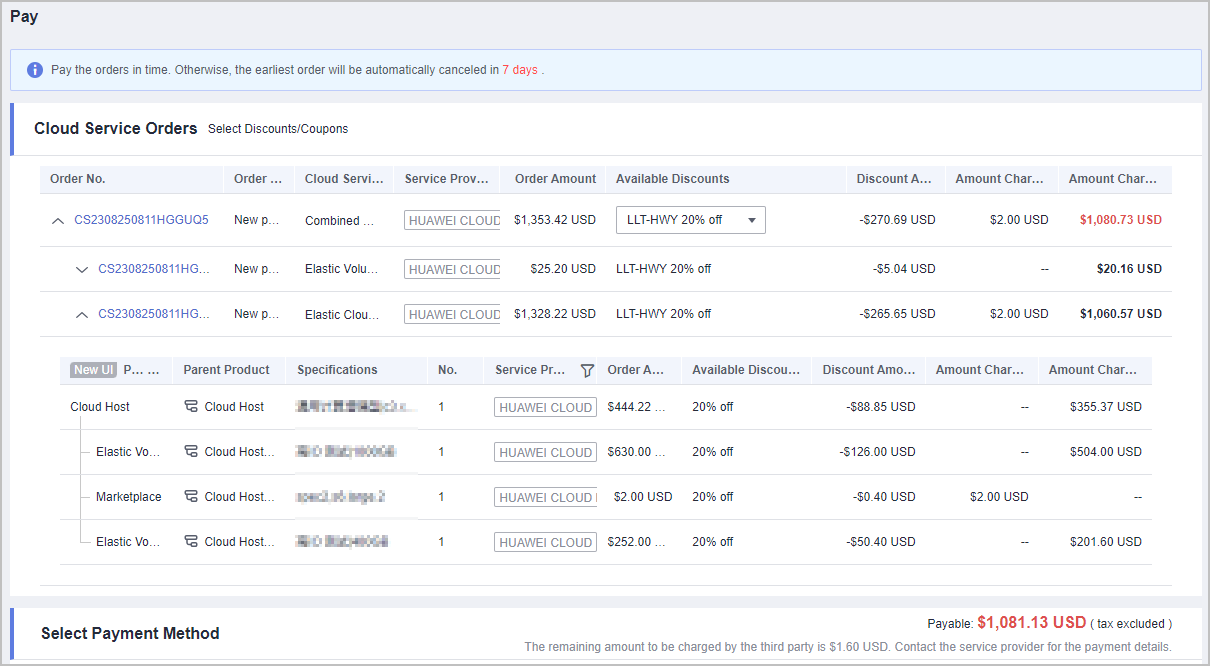
Order List
- There is a combined order with the order No. displayed, which consists of multiple orders.
- The total amount for the combined order is displayed.
- There is only one payment or cancellation button for the combined order.
The changes between the original and current order list pages are as follows:
- Original Orders to Be Paid page:
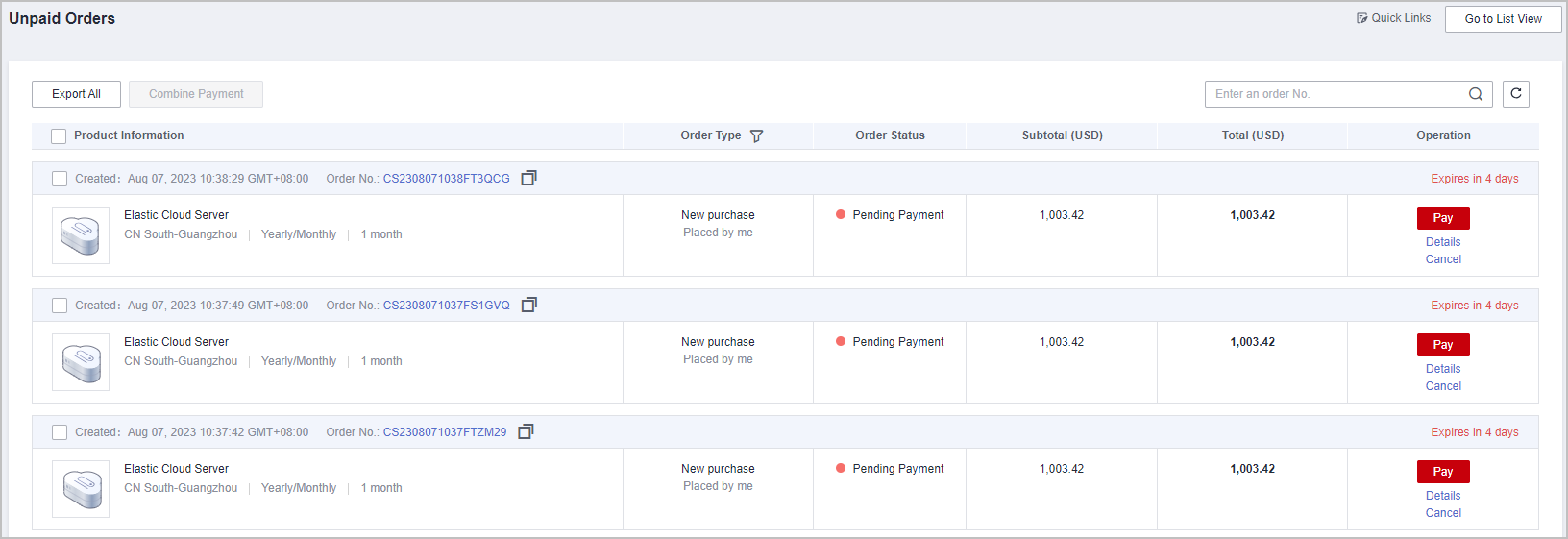
- On the new Orders to Be Paid page:
- You can view the order quantity and the details of 3 orders in the combined order.
- You can click More to view all orders and their details in the combined order.
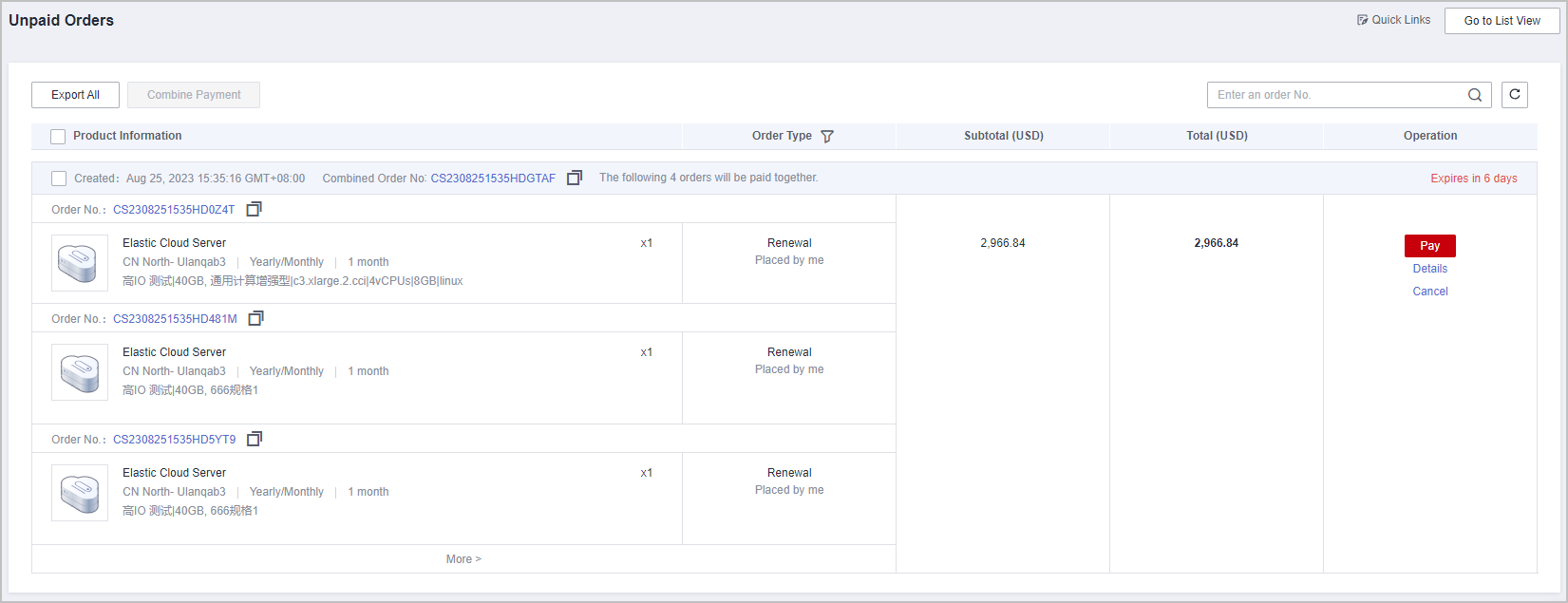
- The changes on the My Orders page are the same as those on the Orders to Be Paid page.
Order Details
When you view the order details:
- You can view the combined order details, such as the combined order name, type, and orders included.
- You can click the order No. to open the specific order and view the details, such as the relationship of the resources.
The changes are as follows:
- The combined order details page is added.
The combined order name, combination type, and orders included are displayed.
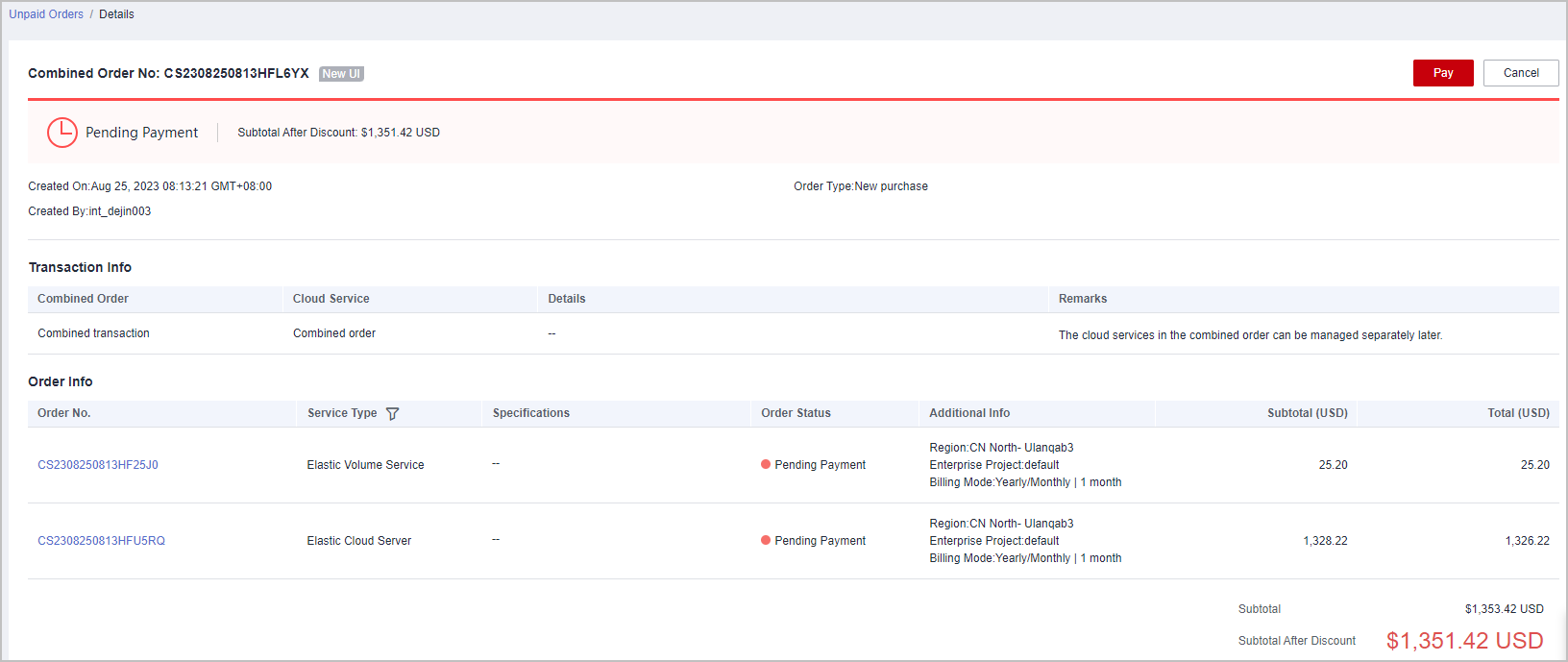
- Original details page for a to-be-paid order:
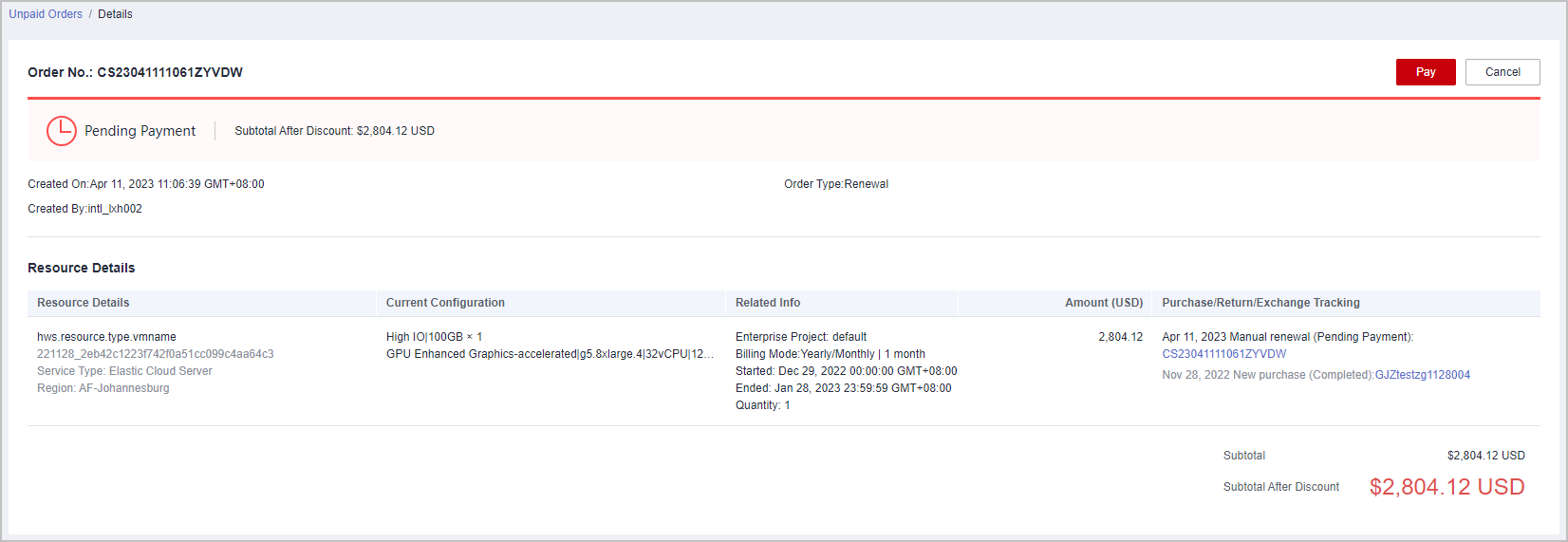
- Current details page for a to-be-paid order:
a. You can view the service and instance information, instead of the resource information. Only when the instance is provisioned, the instance information is displayed.
b. The relationship between services, expenditures, and other details are displayed after the service is expanded.
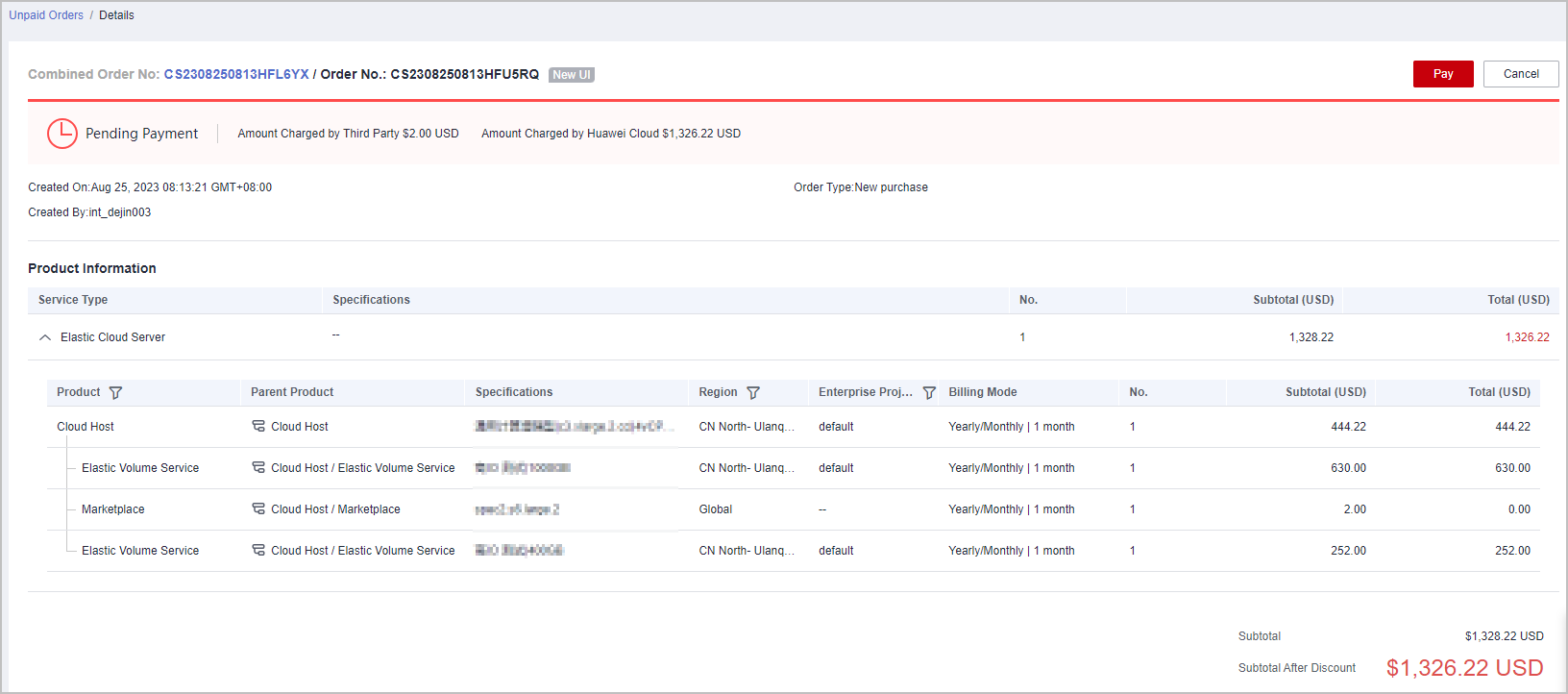
- Original details page of a completed order:
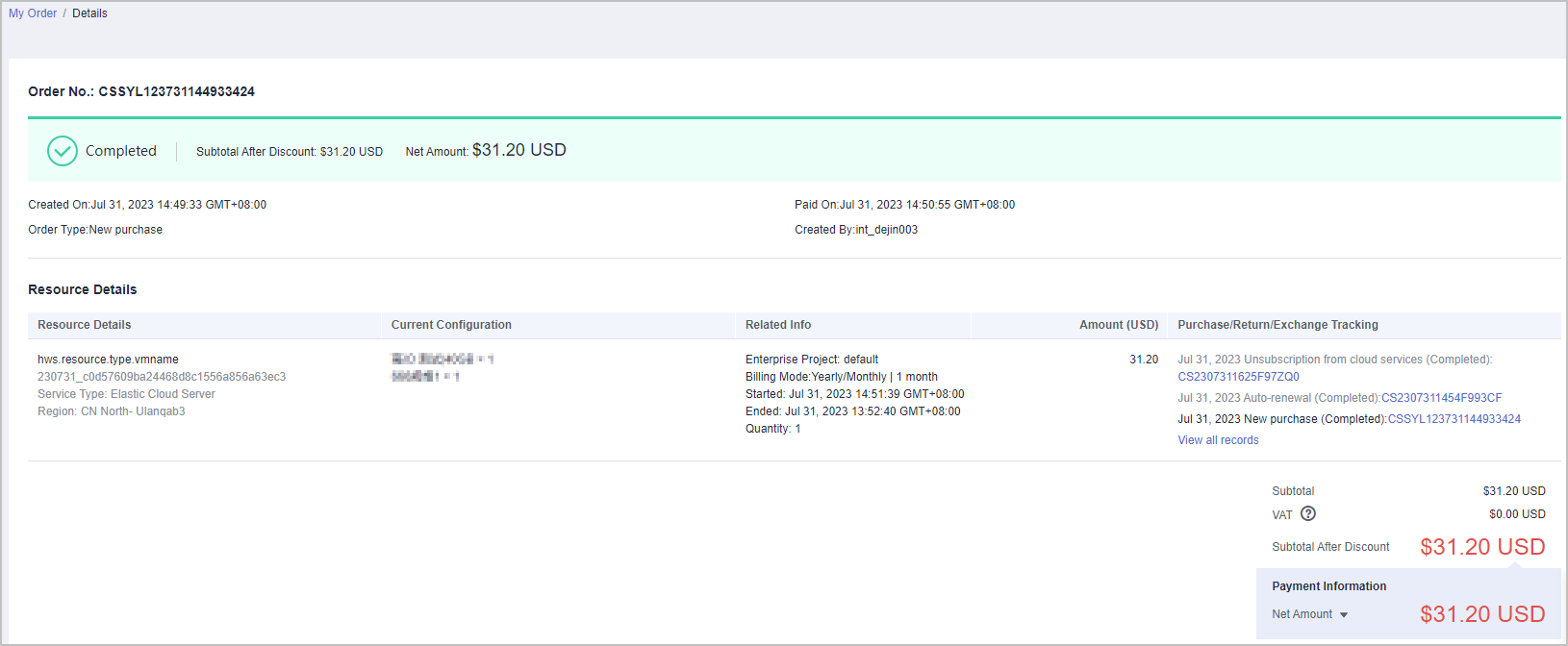
- Current details page of a completed order:
a. You can view the service and instance information, instead of the resource information. Only when the instance is provisioned, the instance information is displayed.
b. The relationship between services, expenditures, and other details are displayed after the service is expanded.
c. The relationship between resources, expenditures, and other details are displayed after the instance is expanded.
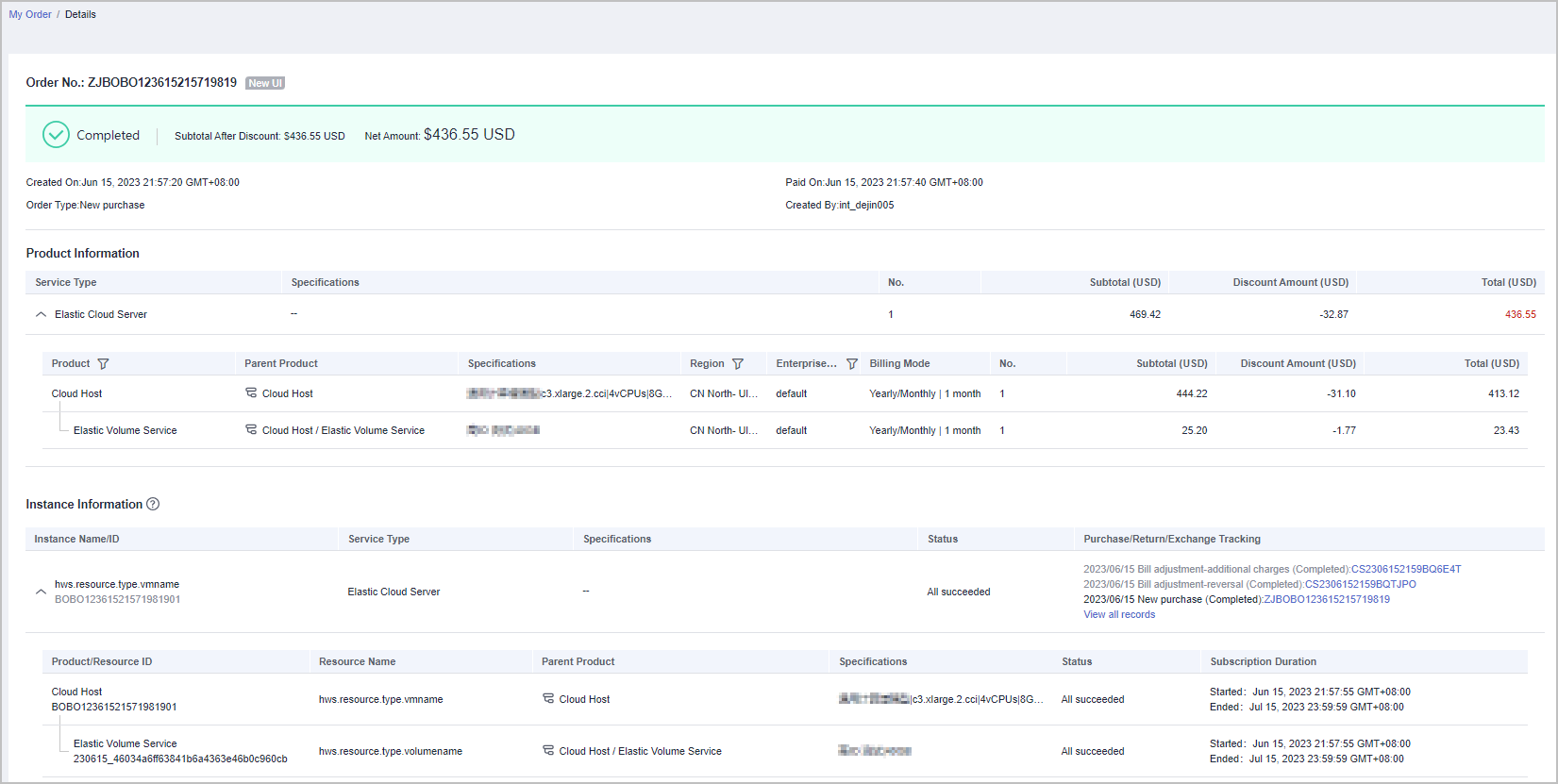
Renewals
The resources in a combined service must be renewed together.
You can expand an instance to view the relationship between resources.
- Original Renewal page:
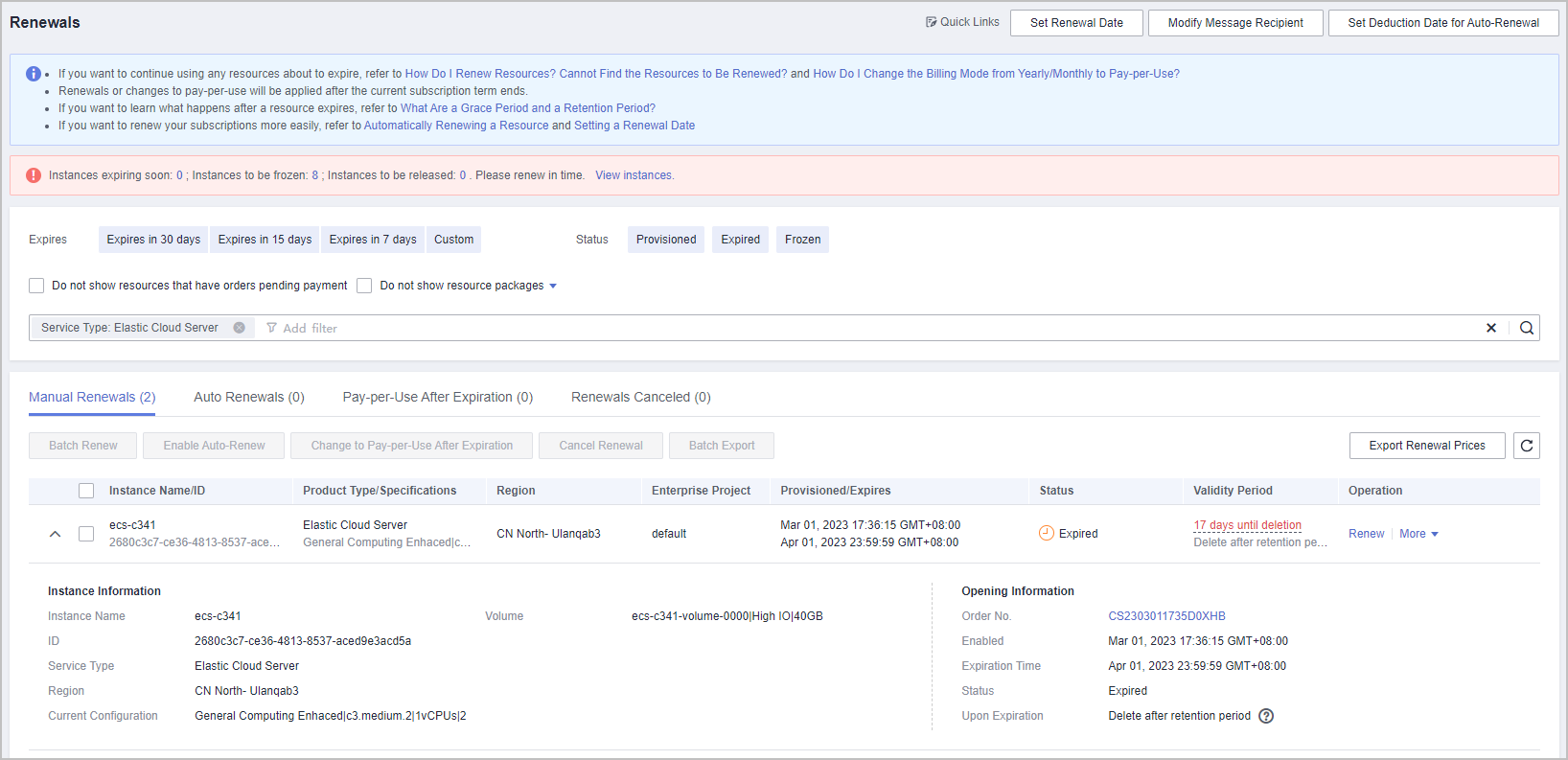
- Current Renewal page:
You can expand the instance to view the relationship between resources, expenditures, and other details.
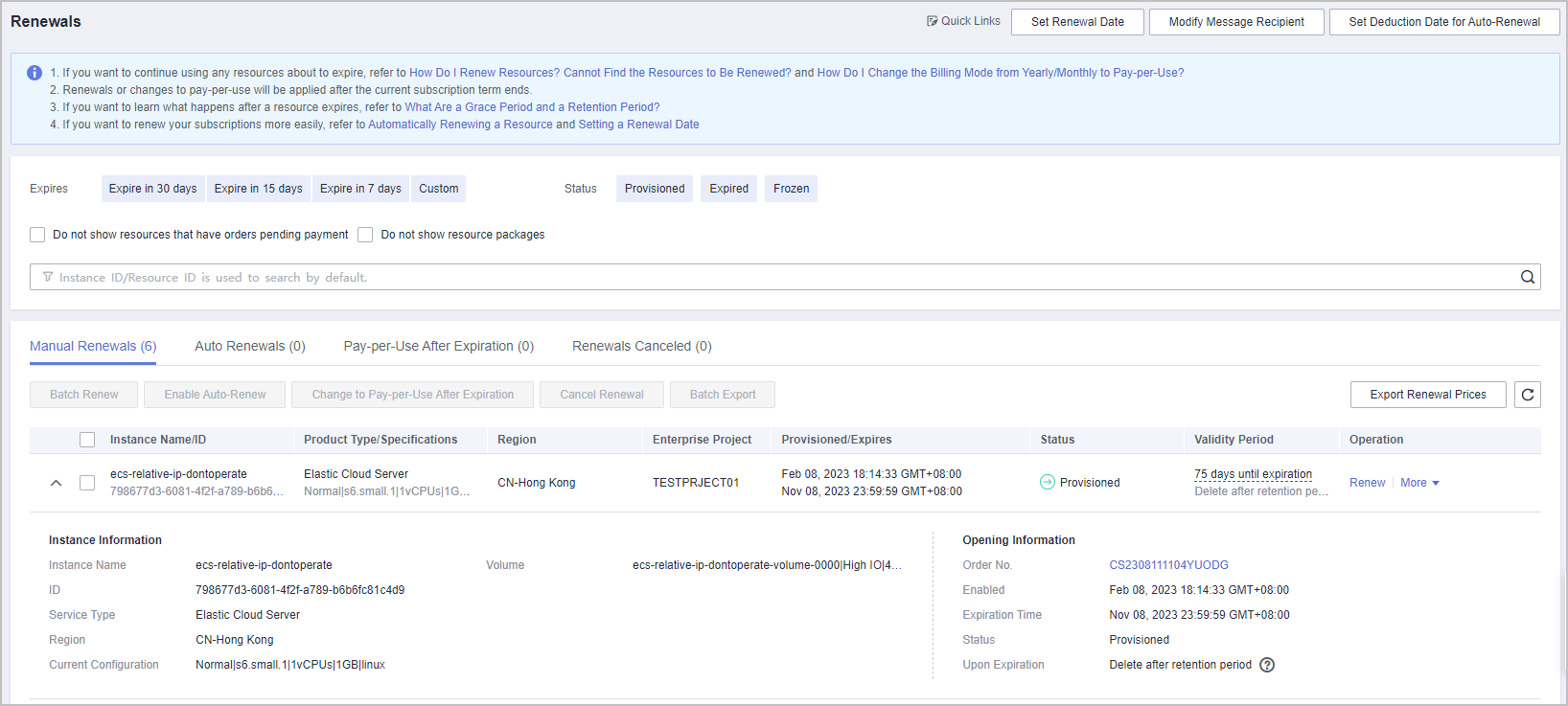
- Original Renewal page:
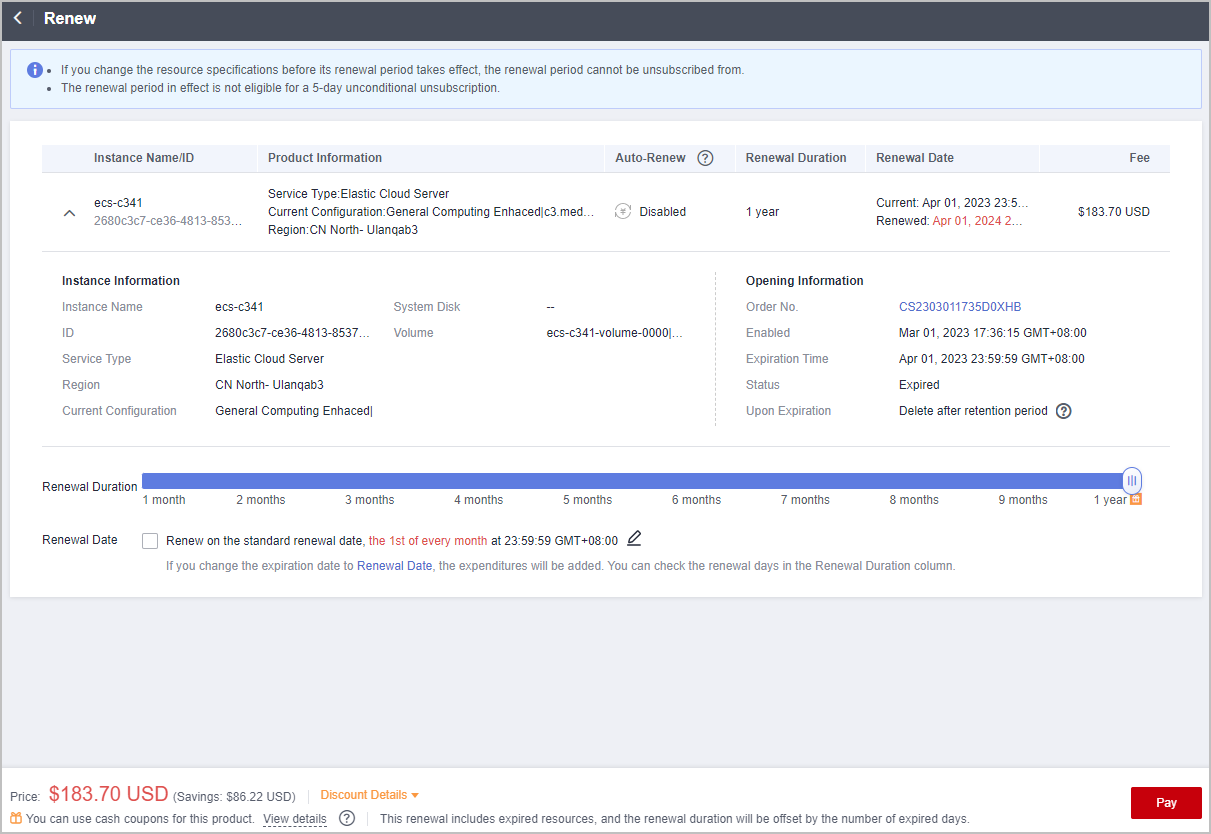
- Current Renewal page:
You can expand the instance to view the relationship between resources, expenditures, and other details.
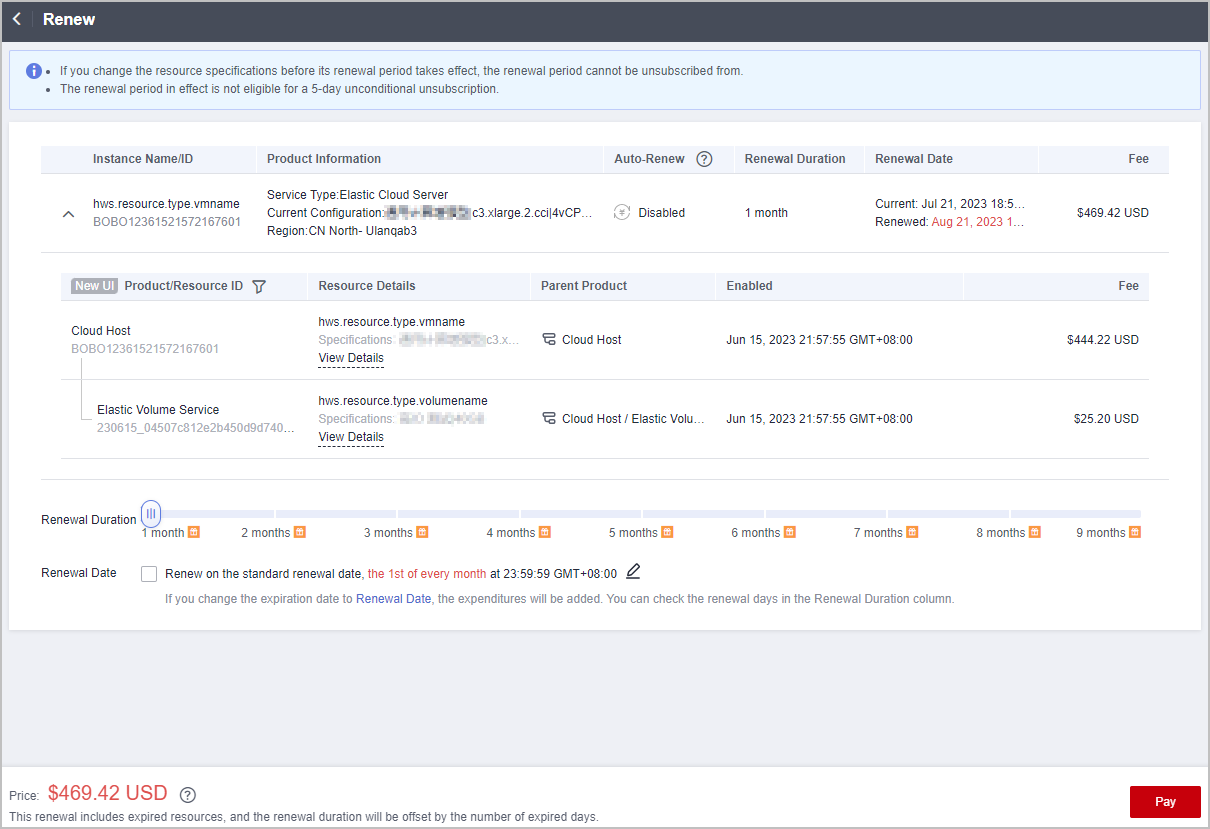
- Original renewal order details:
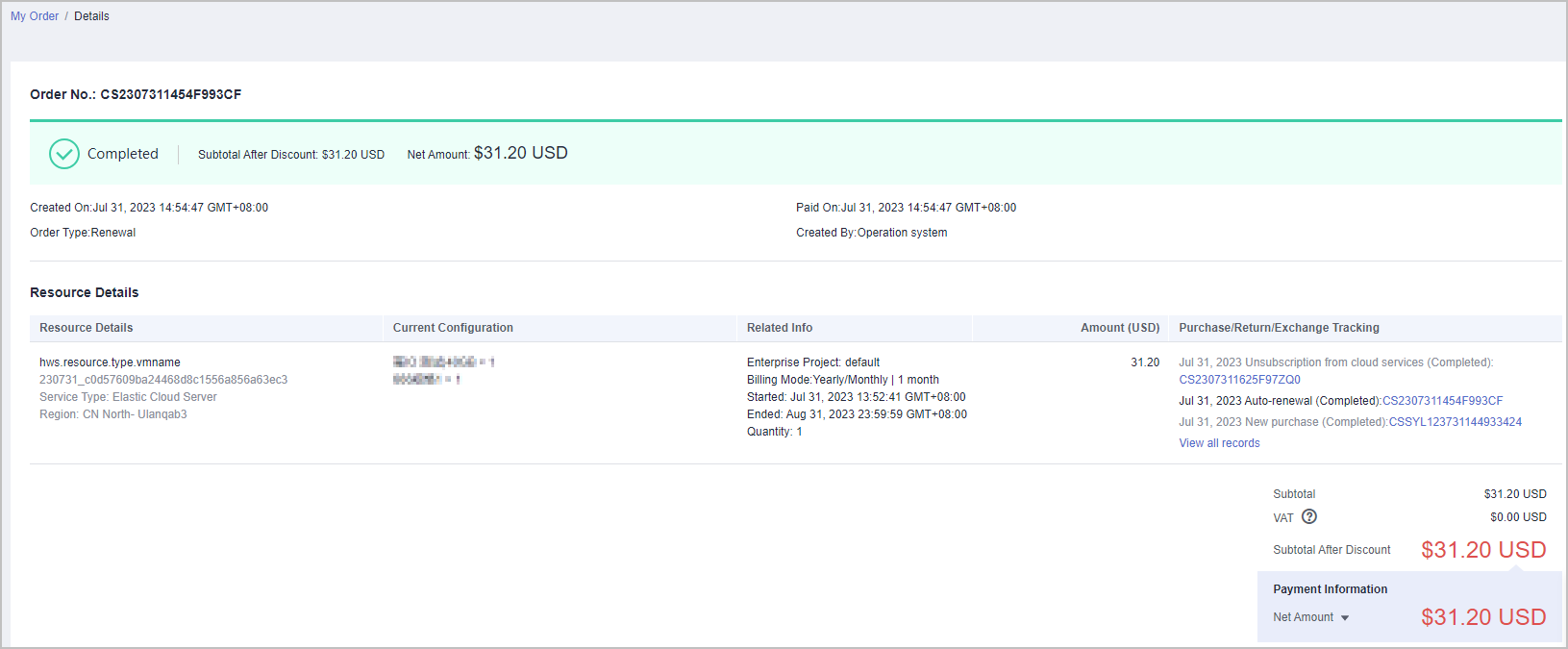
- Current renewal order details:
You can expand the instance to view the relationship between resources, expenditures, and other details.
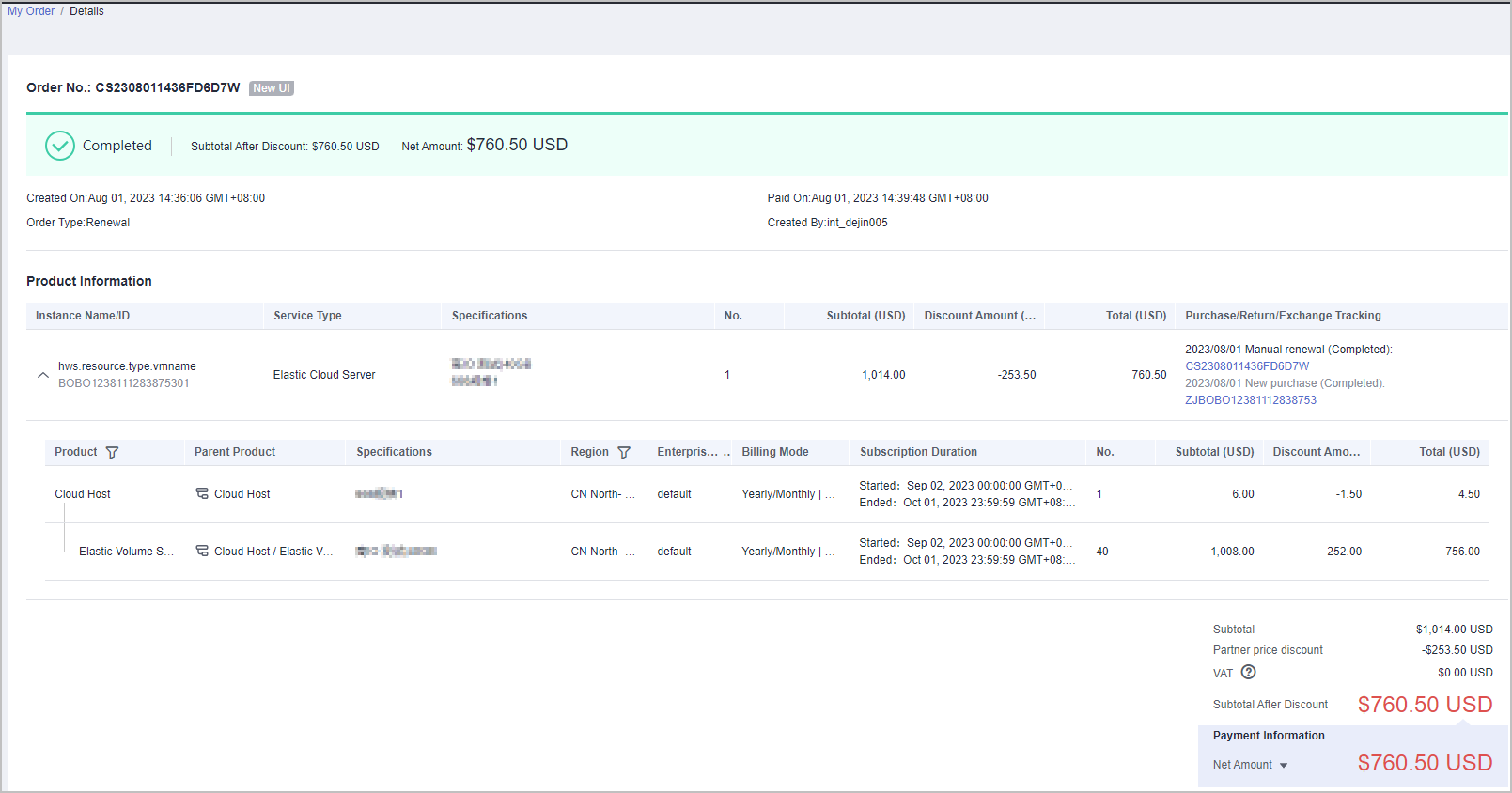
Unsubscriptions
You can expand an instance to view the relationship between resources. The resources in a combined service must be unsubscribed from together.
- Original Unsubscription page:
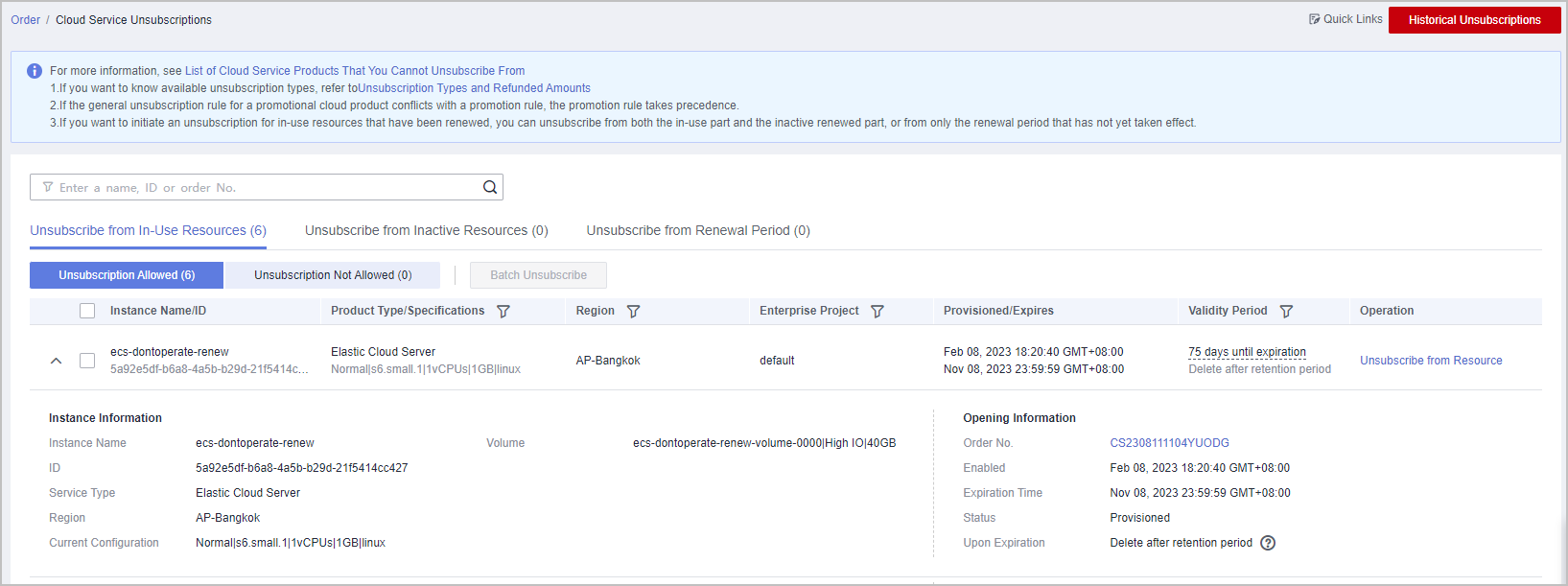
- Current Unsubscription page:
You can expand the instance to view the relationship between resources, expenditures, and other details.
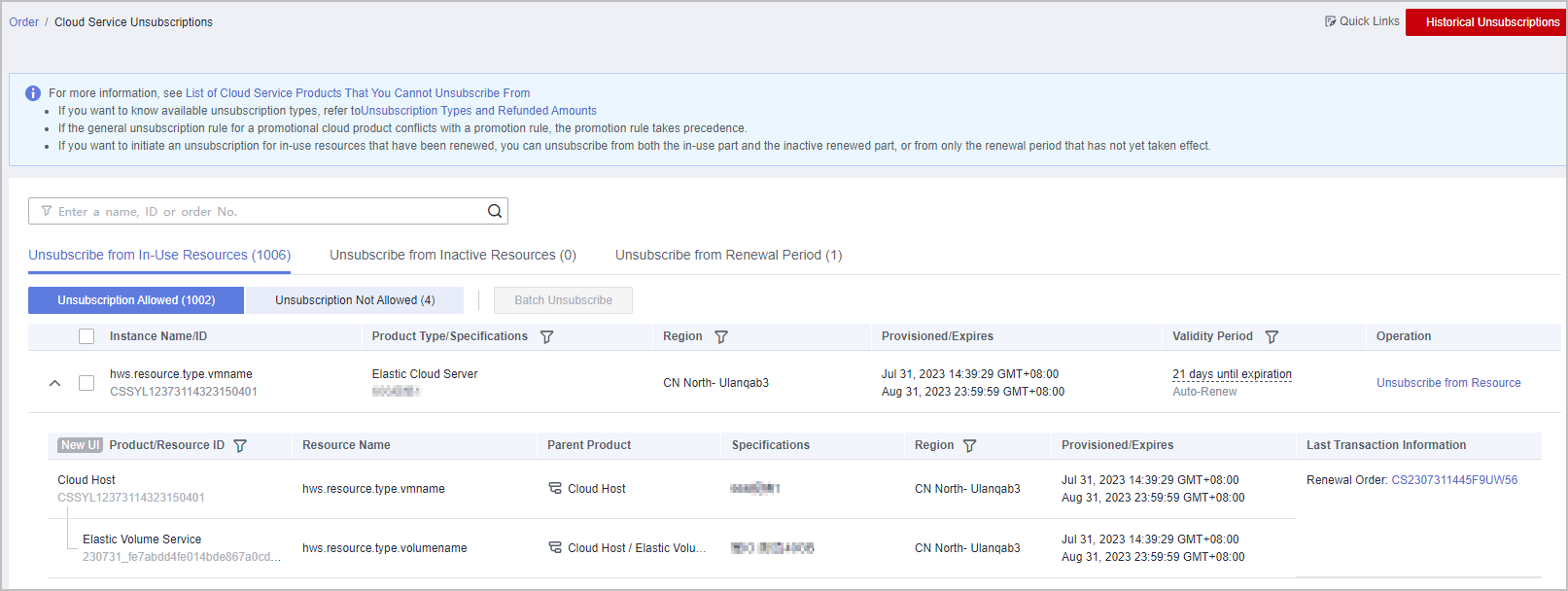
- Original Unsubscription page:
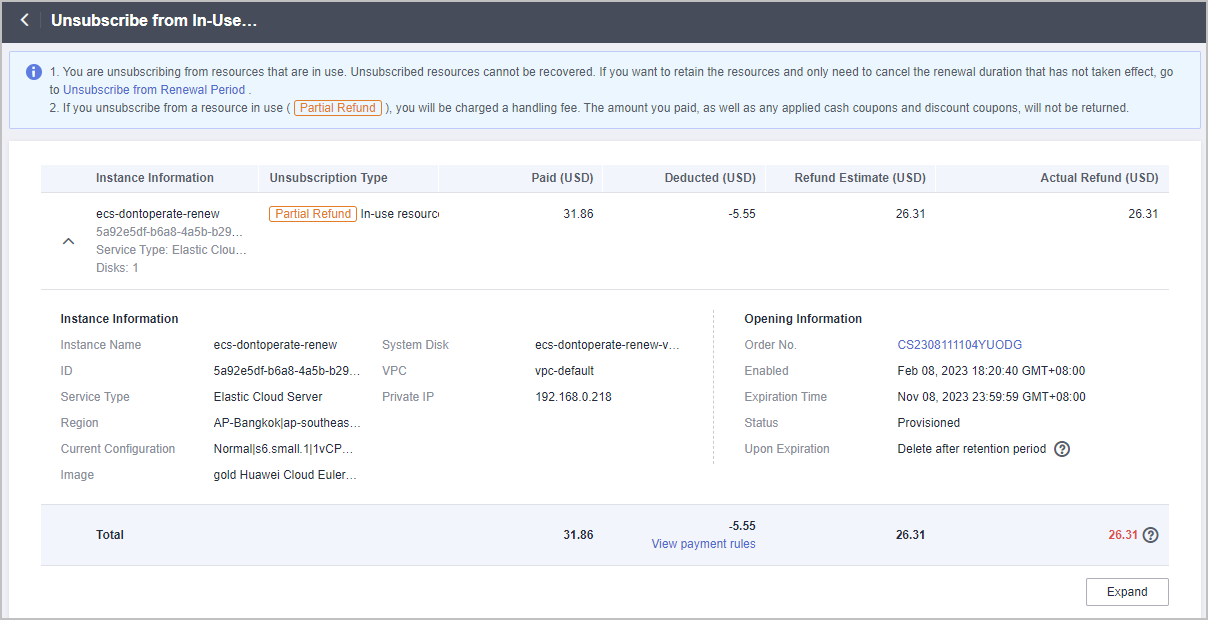
- Current Unsubscription page:
You can expand the instance to view the relationship between resources, expenditures, and other details.
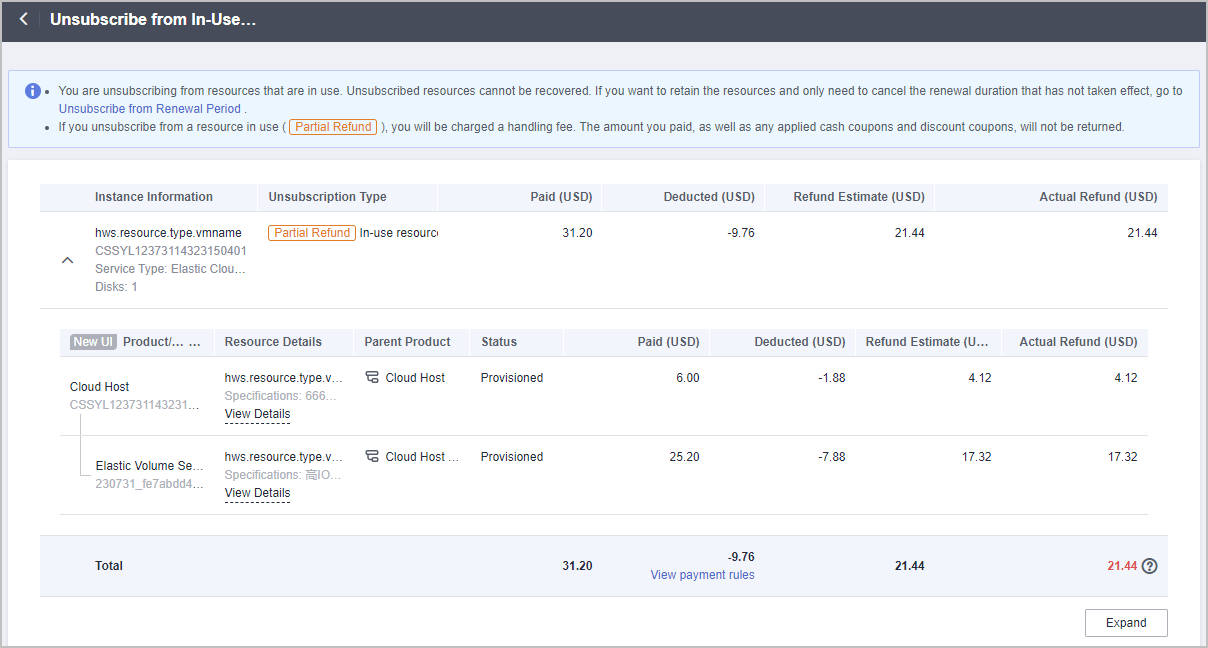
- Original unsubscription order details:
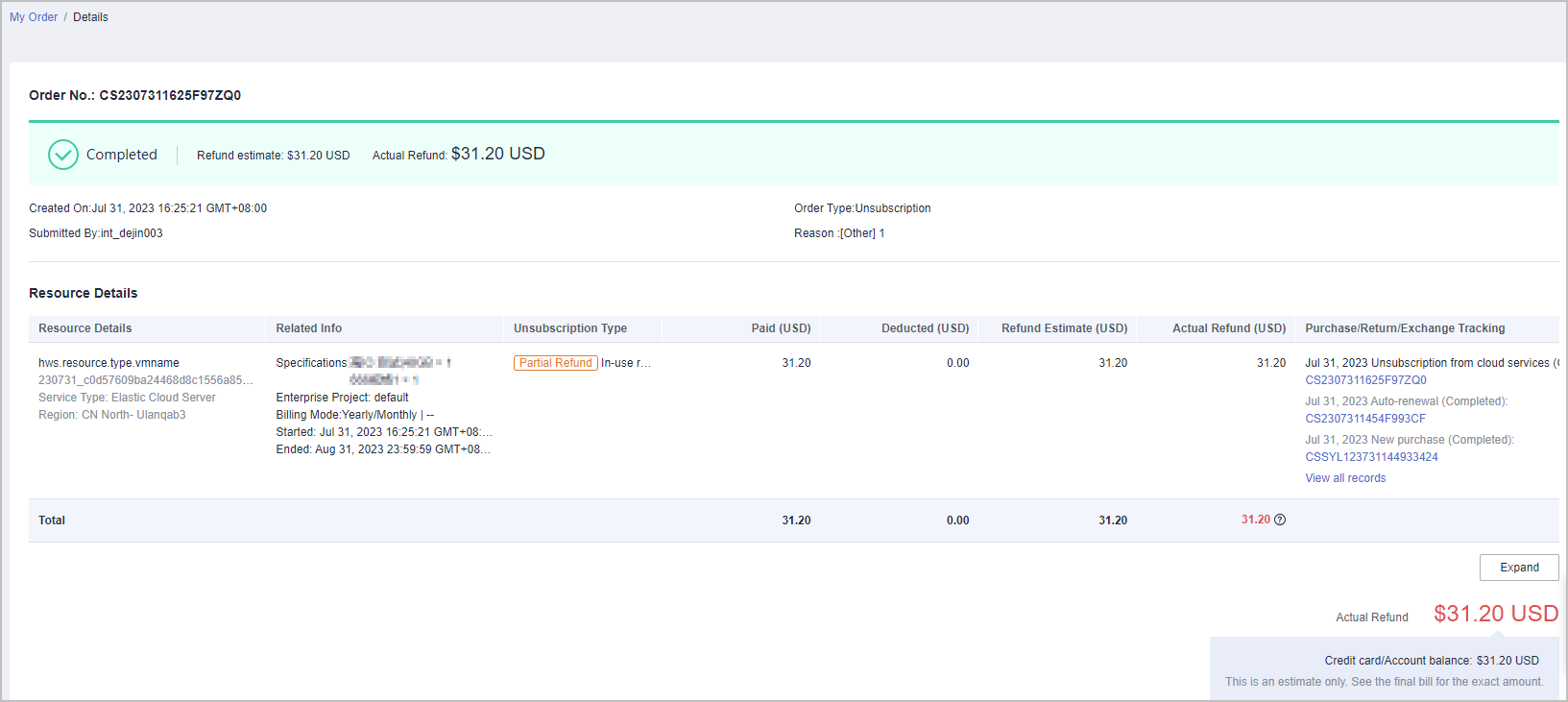
- Current unsubscription order details:
You can expand the instance to view the relationship between resources, expenditures, and other details.
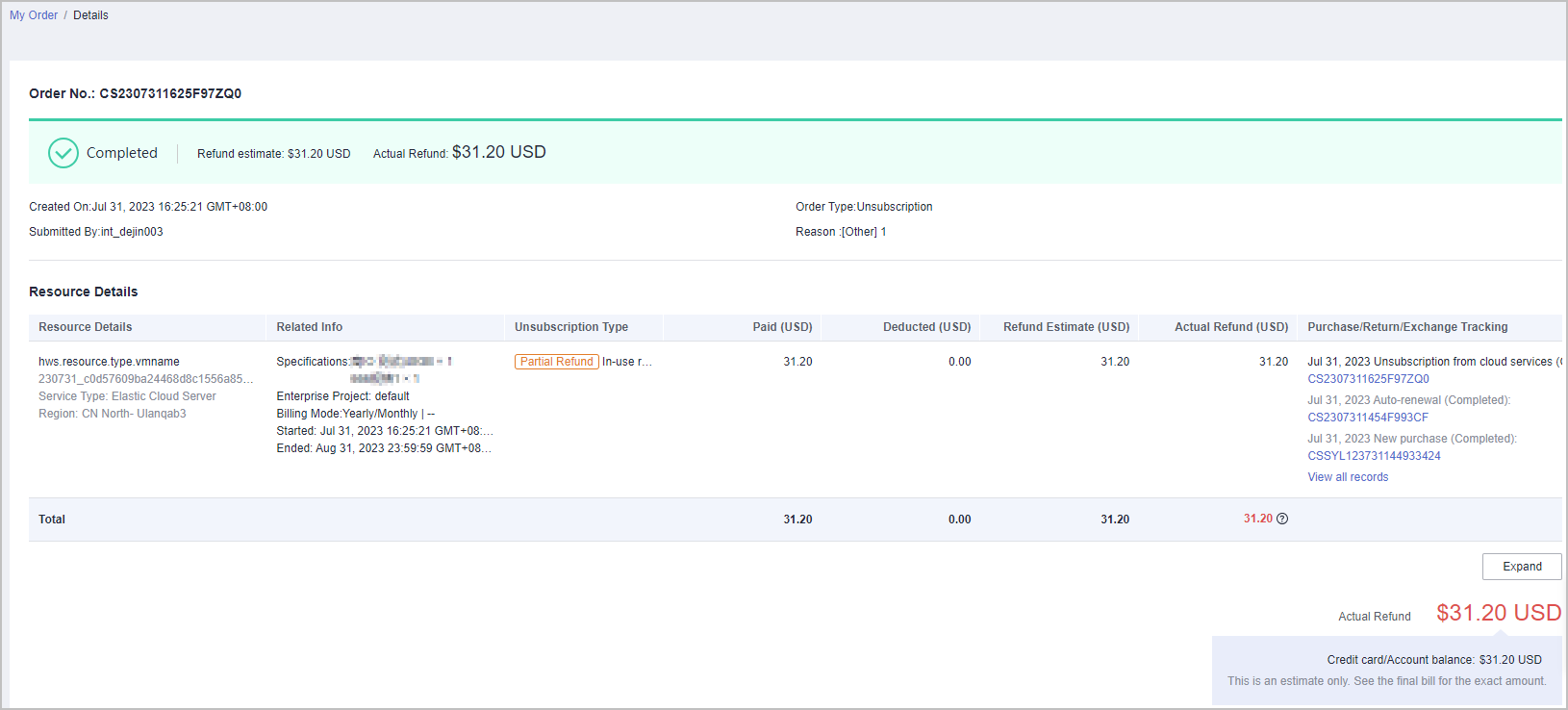
Changing Specifications
After the specifications are changed, an order with the order type Change is generated. The specific change type is displayed on the order list and order details page. The relationship of resources is displayed on the order details page.
Assume that you changed the specifications of an ECS.
- You expanded the disk capacity on the cloud service console.
- You added an EVS disk for the ECS on the cloud service console.
- Original order details:
The order type is New purchase. After the purchase is complete, the child resource is associated with its parent resource.
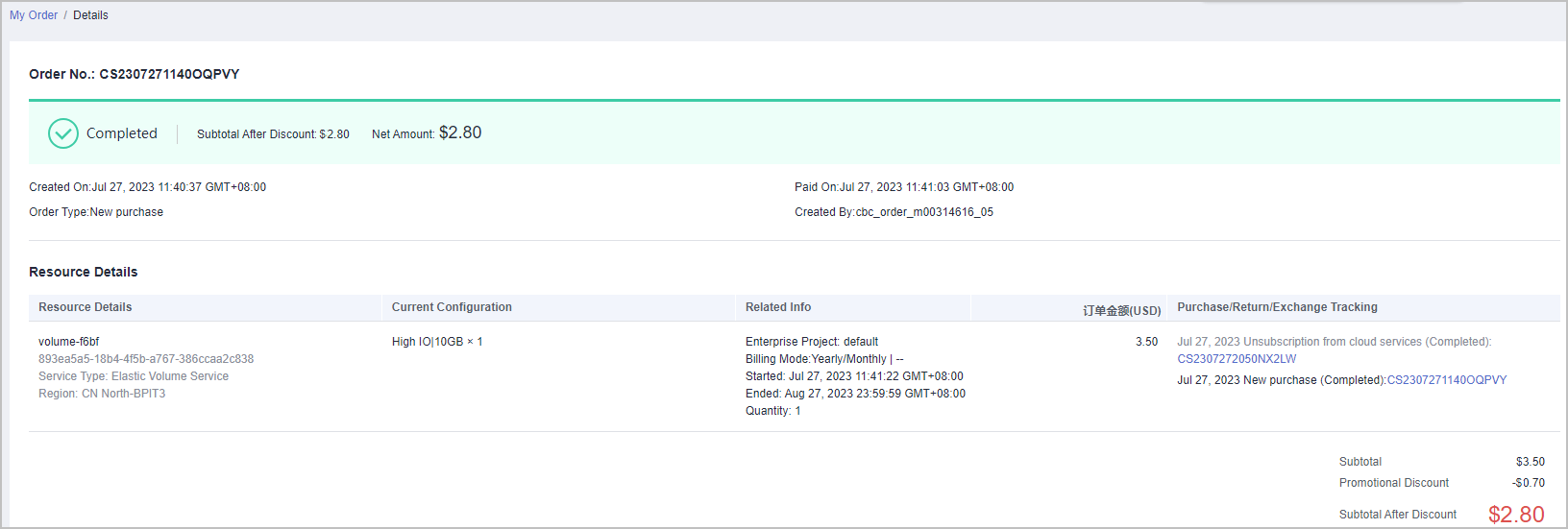
- Current order details:
a. The order type is Change, and the change type is Child resource added.
b. The relationship between services, expenditures, and other details are displayed after the service is expanded.
c. The relationship between resources, expenditures, and other details are displayed after the instance is expanded.
d. The combined service is considered as a whole. The relationship between the added EVS disk and its parent resource is displayed.
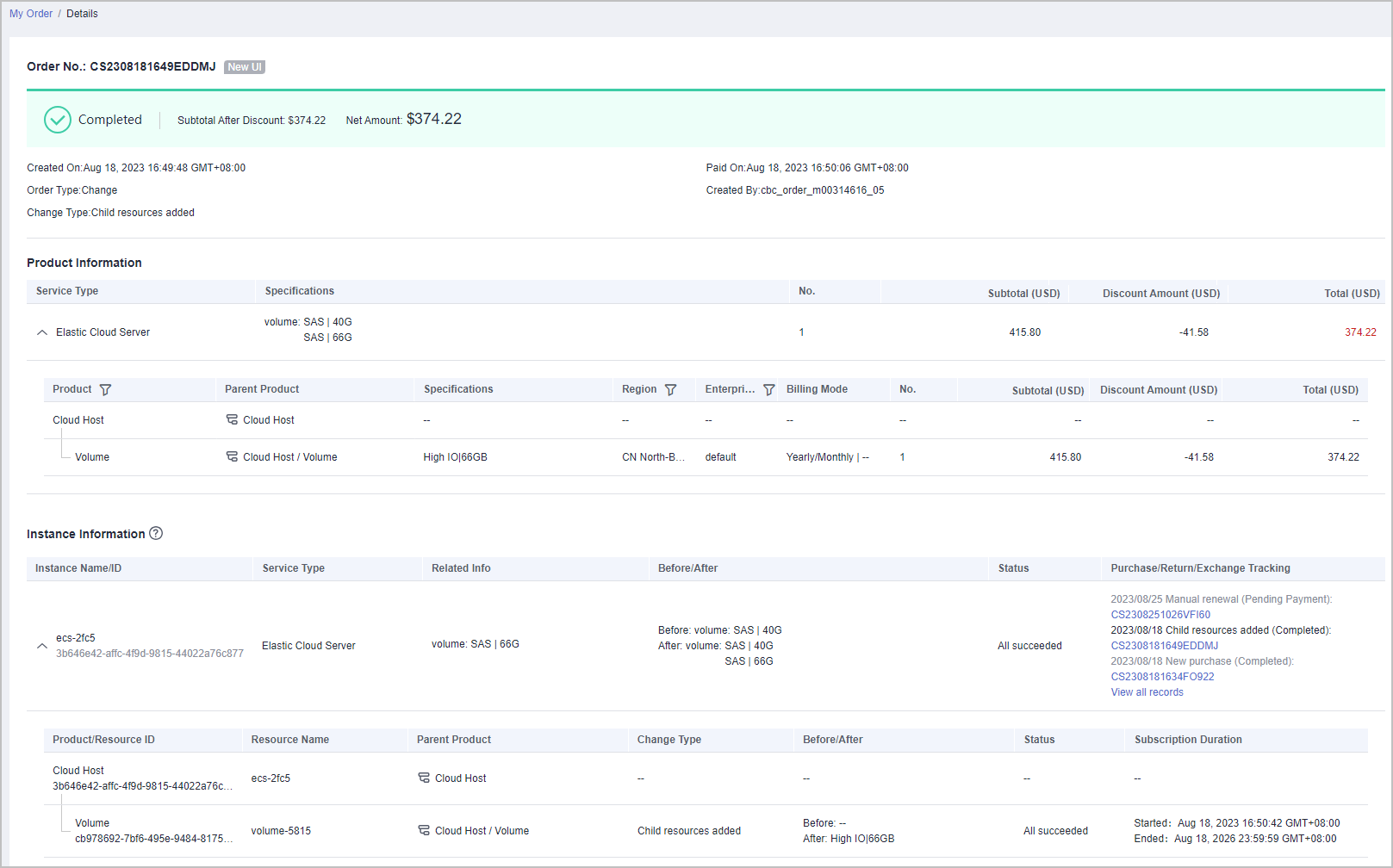
- Original order details:
- You deleted an EVS disk for the ECS on the cloud service console.
- Original order details:
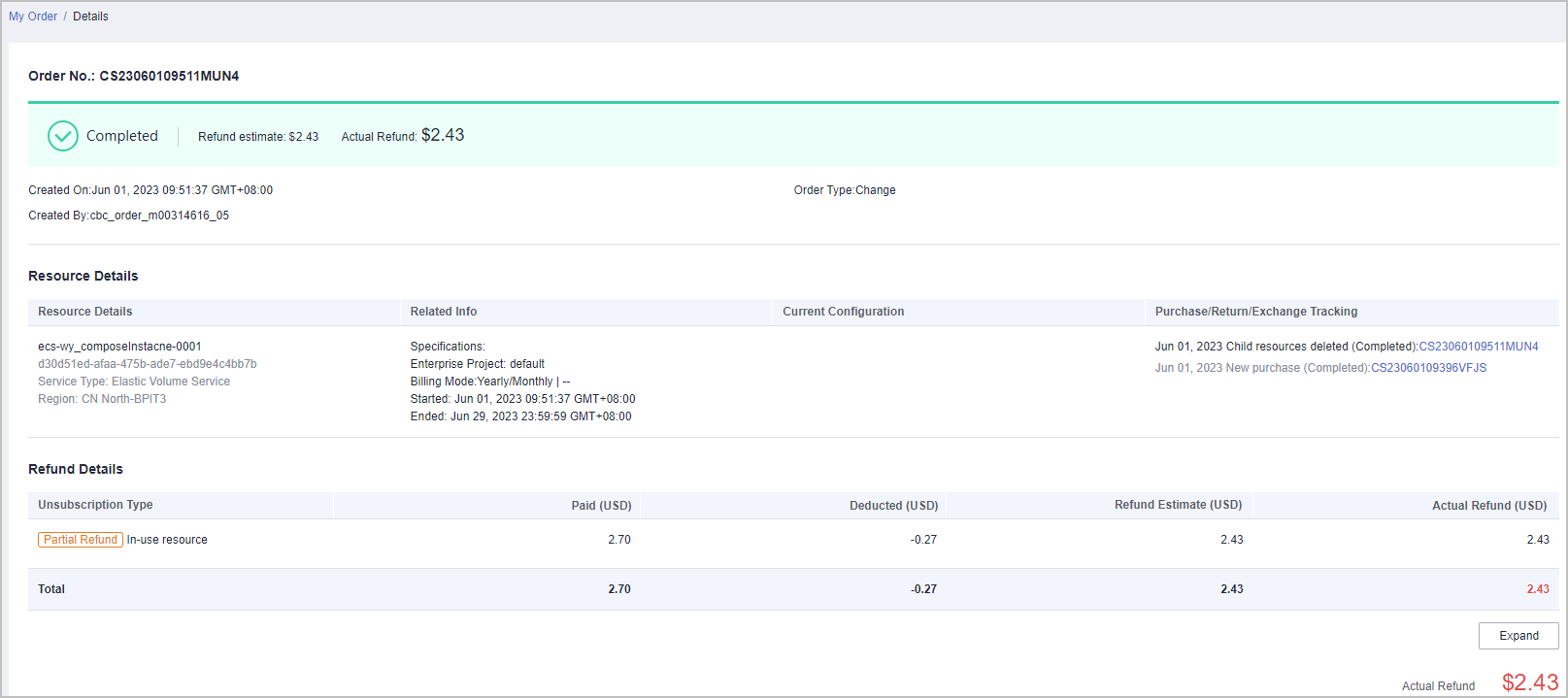
- Current order details:
a. The order type is Change, and the change type is Child resources deleted.
b. The combined service is considered as a whole.
c. After the product information is expanded, the relationship between the deleted EVS disk and its parent resource, the expenditures of the deleted EVS disk, and other details are displayed.
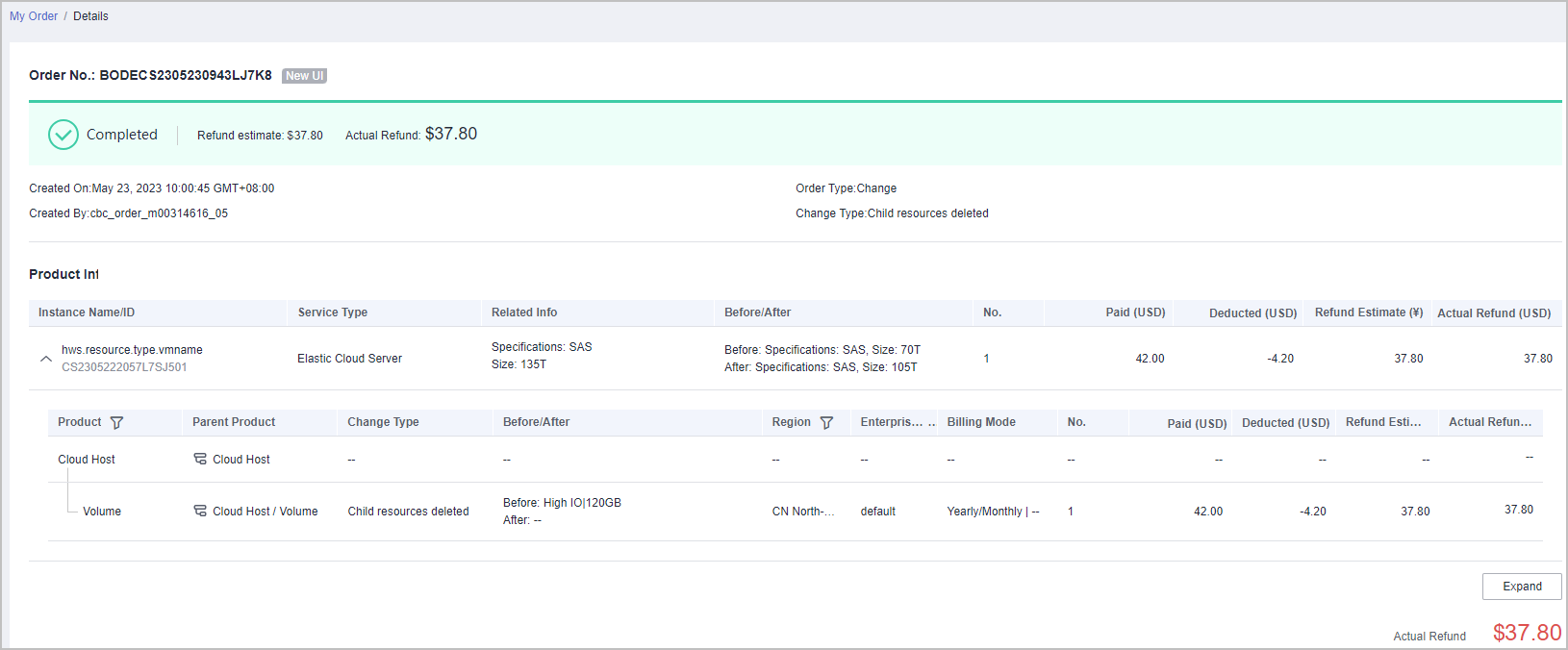
- Original order details:
Billing Mode
When the billing mode is changed between Yearly/Monthly and Pay-Per-Use, the combined service is taken as a whole.
- Original order details of changing the billing mode from Yearly/Monthly to Pay-Per-Use:
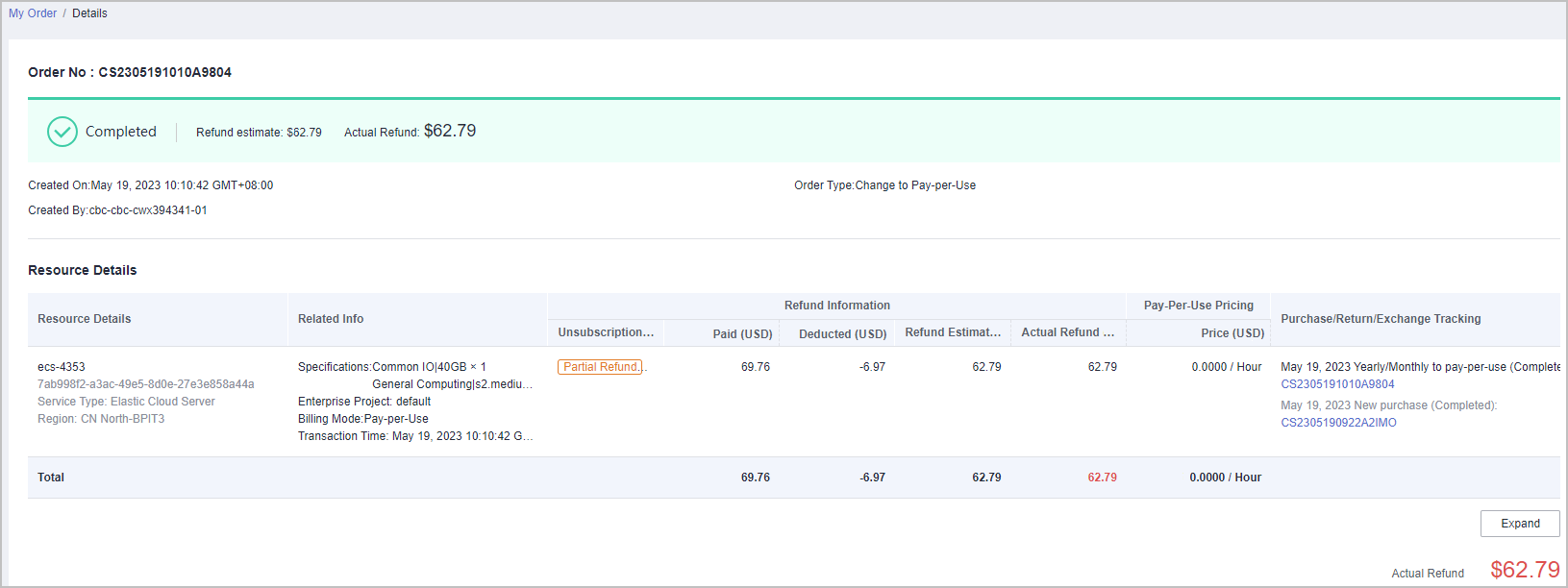
- Current order details of changing the billing mode from Yearly/Monthly to Pay-Per-Use:
You can expand the instance to view the relationship between resources, expenditures, and other details.
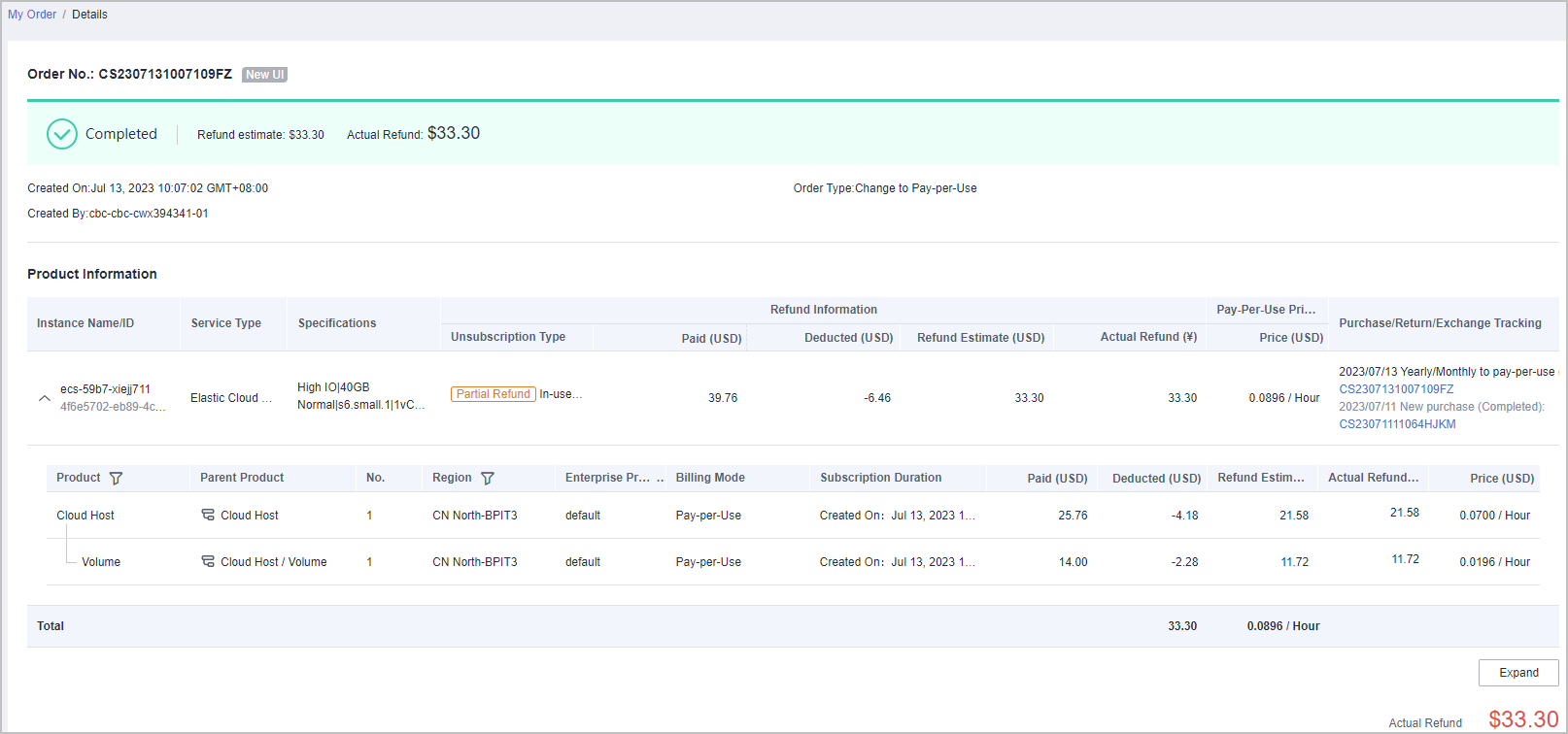
- Original order details of changing the billing mode from Pay-Per-Use to Yearly/Monthly:

- Current order details of changing the billing mode from Pay-Per-Use to Yearly/Monthly:
a. You can view the service and instance information, instead of the resource information.
b. The relationship between services, expenditures, and other details are displayed after the service is expanded.
c. The relationship between resources, expenditures, and other details are displayed after the instance is expanded.
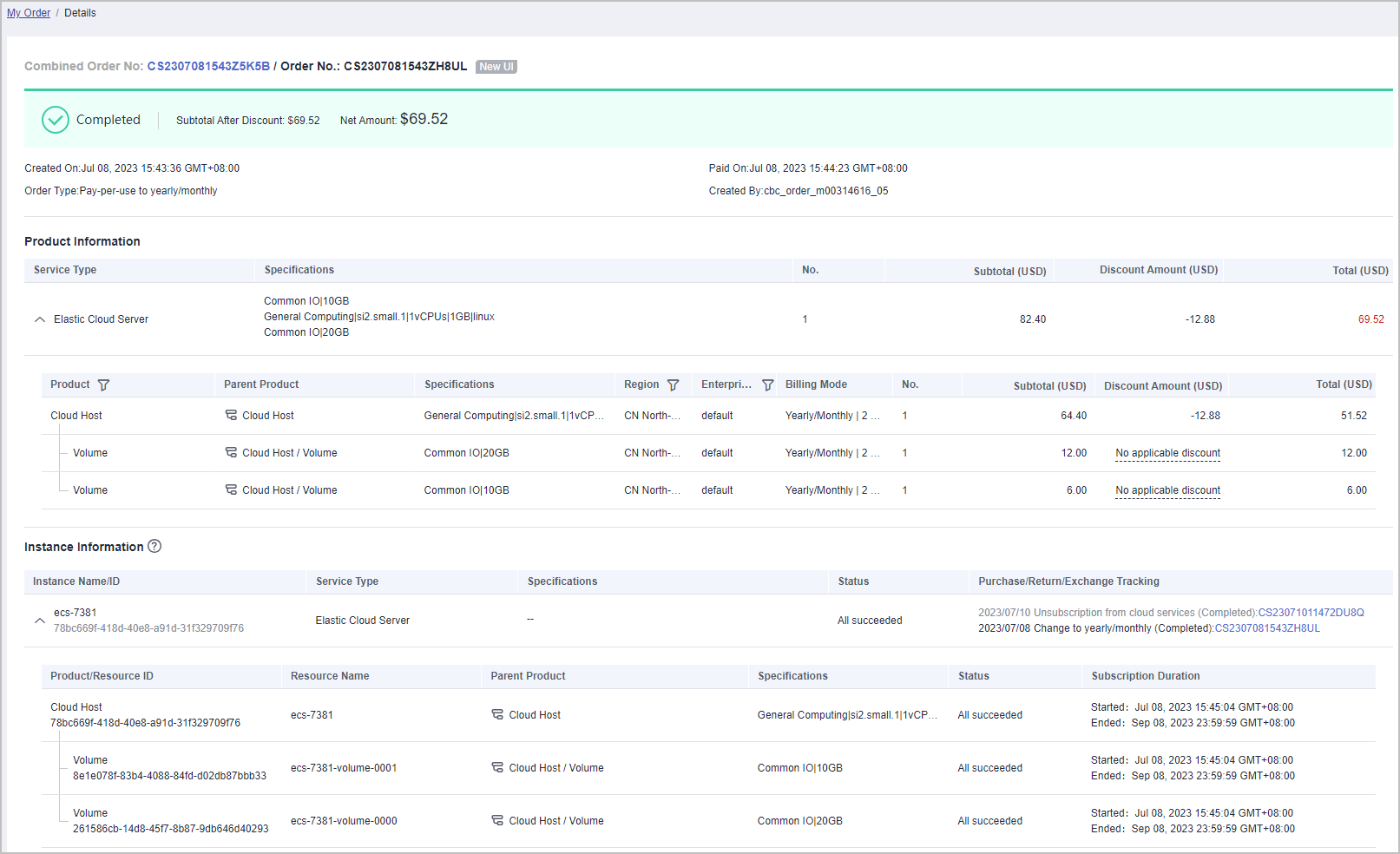
Freezing, Unfreezing, and Deleting Resources
If Huawei Cloud freezes or deletes any resources in the combined service due to arrears or expiration, the combined service, that is the instance, is taken as a whole to be frozen or deleted. After all the resources in the combined service are paid or renewed, the whole instance is unfrozen.
Feedback
Was this page helpful?
Provide feedbackThank you very much for your feedback. We will continue working to improve the documentation.


